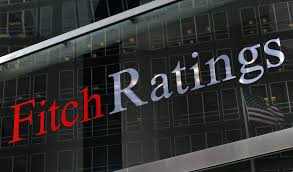Fitch Ratings has affirmed Azerbaijan-based
Accessbank's (AB) and Pasha Bank's (PB) Long-Term Issuer-Default Ratings (IDRs) at 'BB+' and 'BB-', respectively. The Outlooks on both banks are Negative. The agency has also downgraded AB's Viability Rating (VR) to 'b+' from 'bb-' and affirmed PB's VR at 'b+'. A full list of rating actions is available at the end of this rating action commentary.
KEY RATING DRIVERS
AB
AB's Long-Term IDR of 'BB+' and Support Rating of '3' reflect the moderate probability that the bank would receive support from the bank's international financial institution (IFI) shareholders. The European Bank for Reconstruction and Development (AAA/Stable), KfW (AAA/Stable), International Finance Corporation and the Black Sea Trade and Development Bank each hold a direct 20% stake in AB. A further 16.5% is held by Access Microfinance Holding, in turn also controlled by IFIs.
Fitch views the propensity of AB's shareholders to provide support as high because of (i) the IFIs' strategic commitment to microfinance lending in developing markets; (ii) the IFIs' direct ownership of AB, stemming from their participation as founding shareholders; (iii) the significant integration of IFI guidelines into AB's risk management; and (iv) Fitch's expectation that a full exit of the IFIs from the bank in the next few years is unlikely.
However, AB's ability to receive and
utilise any potential support could be restricted by transfer and convertibility restrictions, as reflected in Azerbaijan's Country Ceiling of 'BB+'
The downgrade of AB's VR to 'b+' from 'bb-' reflects significant deterioration in the bank's asset quality and performance following the devaluations of the Azerbaijan manat in 2015. Positively, AB's VR reflects the bank's still reasonable capital levels and manageable refinancing risks.
At end-1H16, AB reported sizable non-performing loans (NPLs; loans 90+ days overdue) at 20% of the total portfolio (57% covered with impairment reserves), up from a moderate 5% at end-2015 (97% covered). Restructured loans comprised a further substantial 54% of the portfolio, as the bank actively extended maturities on USD-denominated exposures following the devaluation of the manat in February and December 2015. The ultimate credit quality and recoverability of these restructured loans
is yet to be tested.
In 1H16, AB reported
pre-impairment profit of AZN13m or 3.1% (
annualised) of average gross loans. This figure would be a negativeAZN10m (-2.4%) if adjusted for interest accrued, but not received in cash. The bottom line was further negatively affected by elevated impairment charges (11.5% of average loans,
annualised) resulting in a net reported
loss of AZN28m in 1H16 (equal to 19% of end-2015 equity).
Despite the weak performance, AB's reported Fitch Core Capital (FCC) ratio remained a high 16% at end-1H16, only down by 1ppt from end-2015. The capital position was supported by deleveraging, as the loan book contracted 21% in 1H16.
Fitch sees
significant further downside to AB's asset quality,
performance and capital, since at least some of the AZN64m of unreserved NPLs (68% of FCC at end-1H16) or AZN388m of restructured loans (4.1x FCC) may result in additional impairment charges. Fitch estimates that AB's regulatory capital buffer is only sufficient to absorb additional charges of 5% of gross loans before reaching the regulatory minimum of 10%, which would be barely sufficient to fully cover existing NPLs.
Near-term refinancing
needs moderated in
1H16, but remain significant. At end-1H16, the bank's wholesale funding maturing within 12 months was equal to around 30% of total liabilities, although the available liquidity buffer was equal to 92% of this. Refinancing risks are reduced by AB's firm access to IFIs and parent funding.
PB
PB's IDRs, SR and SRF are underpinned by the moderate probability of support from the Azerbaijan authorities, in
case of need. Fitch's view on support takes into account: (i) PB's moderate systemic importance as part of the largest privately-owned banking group in the country, as together with its sister bank
Kapital Bank (KB) they hold around 15% of sector deposits; (ii) the somewhat improved track record of sovereign support for the banking sector in light of the ongoing financial rehabilitation of International Bank of Azerbaijan (IBA, BB/Negative/b-); and (iii) the benefits of PB being ultimately owned by a structure closely connected to the Azerbaijani authorities, which at least in the near term should make support more likely, in Fitch's view.
The Negative Outlook on PB's IDR mirrors that on the sovereign. The two-notch differential between the sovereign's and
bank's ratings reflects the uneven track record of sovereign support for the sector and PB's more moderate systemic importance relative to the larger IBA, which at end-2015 held around 41% of sector deposits and is rated one notch higher than PB.
PB's VR reflects the bank's solid
capitalisation, ample liquidity and so far manageable asset quality deterioration amid the downturn in the broader economy. At the same time, the rating remains constrained by (i) fragile operating environment, which is currently in credit
downcycle due to a fall in oil prices, (ii) only moderate operating profitability, if adjusted for one-off gains in 2015, (iii) the bank's still limited franchise and track record; and (iv) some uncertainty with respect to the long-term sustainability of the bank's sizeable related-party funding.
PB is strongly
capitalised, as expressed by its solid 31% FCC ratio at end-2015. In Fitch's view, PB is unlikely to consume this large capital buffer in the near-term given moderate growth plans (and limited actual growth in 1H16) and manageable loan impairment to date.
According to PB's unconsolidated regulatory
disclosures NPLs were around 9% of gross loans at end-2015 while restructured loans added a further 6%; however, the former ratio was supported by significant write-offs in 2015, equal to 6% of average loans. The major downside risk to asset quality stems from PB's foreign currency loans (51% of the portfolio, or 1.2x end-2015 FCC), although some of PB's largest borrowers may benefit from access to foreign currency revenue or state support. The bank's unconsolidated regulatory accounts show a rise in NPLs to 11% at end-4M16.
PB's 2015 profitability was largely supported by one-off gains, including an AZN13m translation gain and
a AZN5.5m gain on FX derivatives. Fitch estimates that net of these gains PB would have been marginally above break-even in 2015. PB's performance on the pre-impairment level is undermined by significant accrued interest income (AZN11.3m or 16% of 2015 pre-impairment profit) but remains reasonable. Fitch estimates that PB's core pre-impairment profit in 2015
equalled to a sizable 6.7% of average gross loans (this may have reduced to around 5% in 1H16 according to PB's management accounts).
PB's total available liquidity, net of potential wholesale debt repayments, comfortably covered around 62% of the bank's end-1H16 customer accounts. However, this should be viewed against significant related-party funding (around 51% of end-2015 liabilities) and high
single name concentration of liabilities (at end-2015 the three largest customers contributed 26% of total liabilities).
RATING SENSITIVITIES
IDRS,
SRs AND SRFs
The Negative Outlooks on both
banks
reflect that on the sovereign. Accordingly, the support-driven IDRs on the banks will likely be downgraded in case of the sovereign and the Country Ceiling being downgraded. Conversely, a revision of the Outlook on the sovereign to Stable will likely result in a similar action on the banks.
Downside pressure on the banks' IDRs could also result from a potential weakening of support from the sovereign (for PB) or from IFI shareholders (for AB), although Fitch views this unlikely in the near-term.
Upside for PB, implying a reduction of the notching between the bank's ratings and that of the sovereign, is limited at present. However, (i) further development of PB's franchise resulting in a marked increase in the bank's systemic importance; or (ii) improvements in the track record of sovereign support for the banking sector as a whole would be credit-positive.
Negative pressure on the VRs could stem from significant asset quality deterioration at either of the
banks, if this results in significant erosion of the capital base. These risks are markedly higher for AB given its higher share of foreign currency-denominated loans, and a smaller capital buffer.
Upside for the banks' VRs is limited given the weak outlook for the broader economy. However,
stabilisation of economic performance and of the banks' asset quality metrics would reduce downward pressure on their VRs.
www.ann.az
 reflect that on the sovereign. Accordingly, the support-driven IDRs on the banks will likely be downgraded in case of the sovereign and the Country Ceiling being downgraded. Conversely, a revision of the Outlook on the sovereign to Stable will likely result in a similar action on the banks.
reflect that on the sovereign. Accordingly, the support-driven IDRs on the banks will likely be downgraded in case of the sovereign and the Country Ceiling being downgraded. Conversely, a revision of the Outlook on the sovereign to Stable will likely result in a similar action on the banks.










